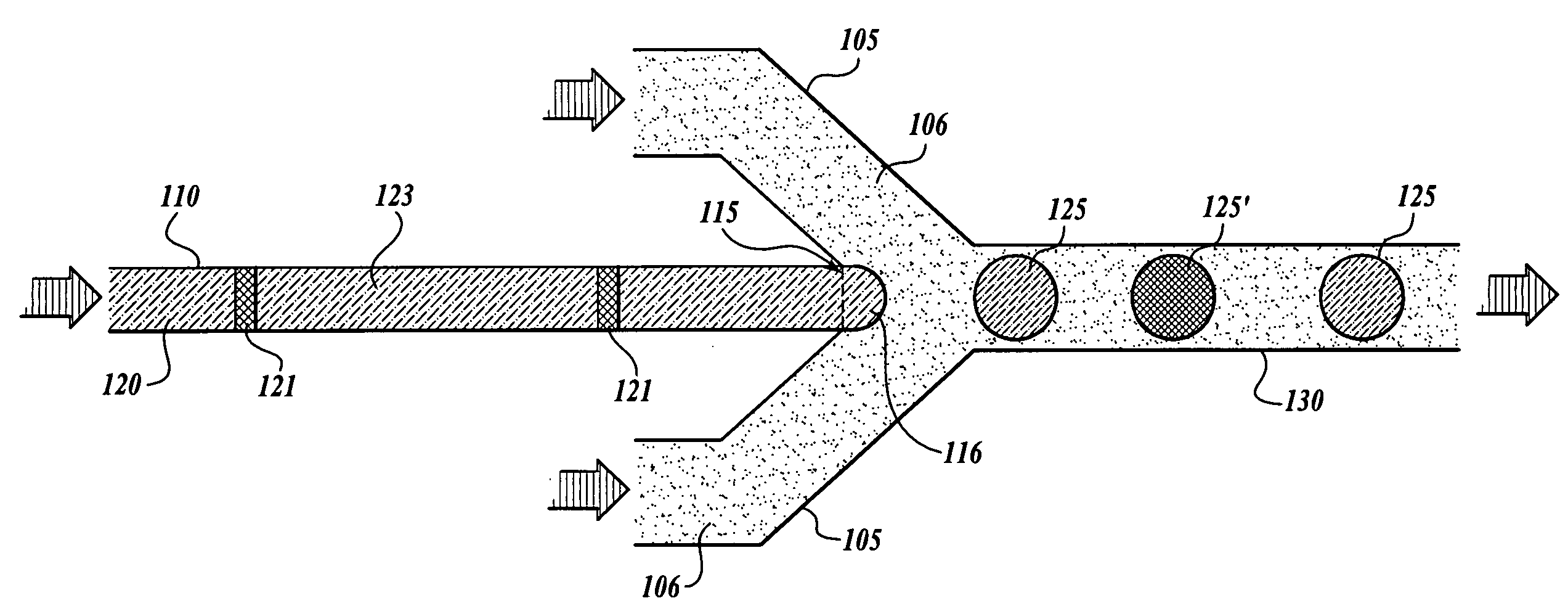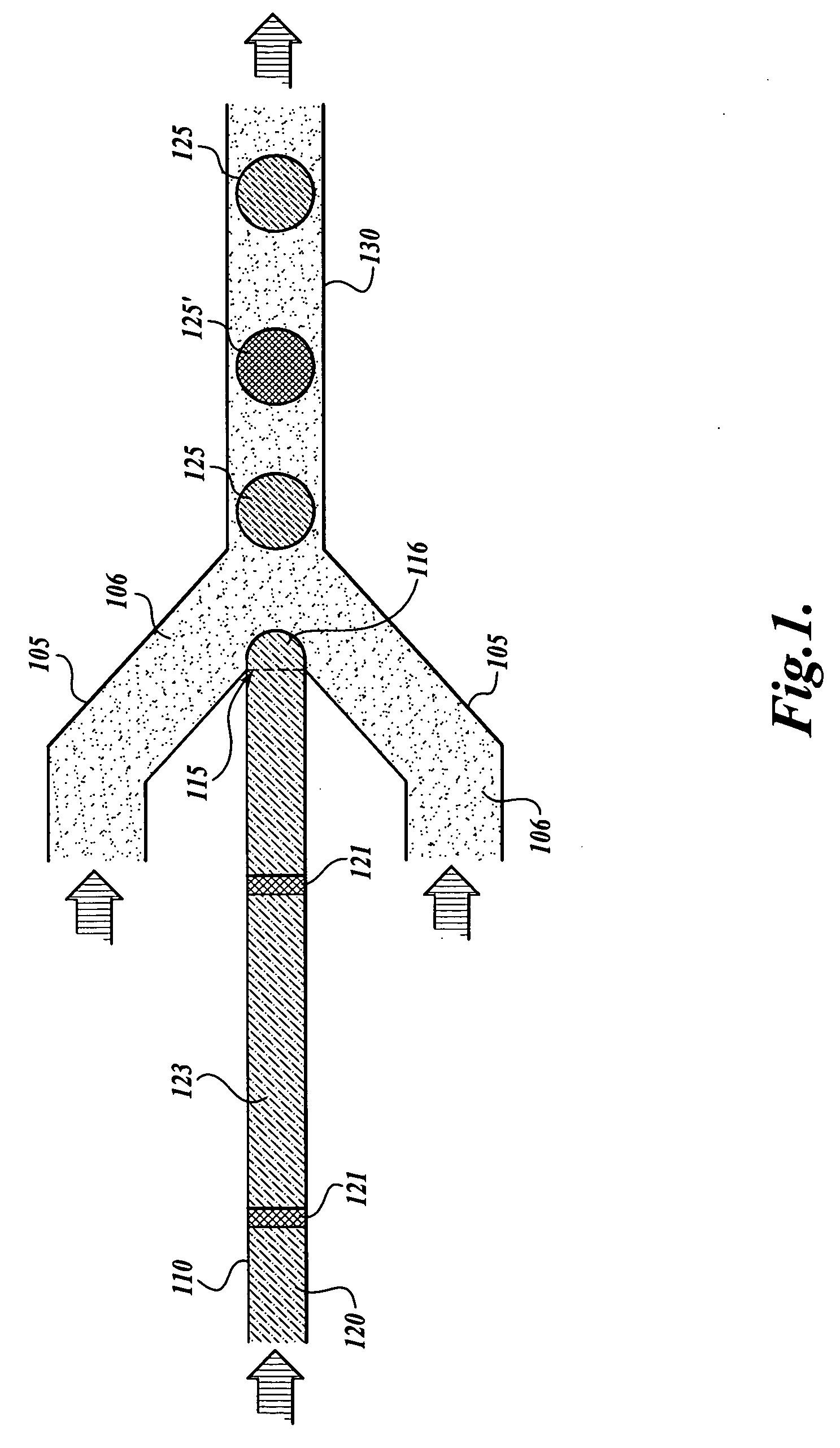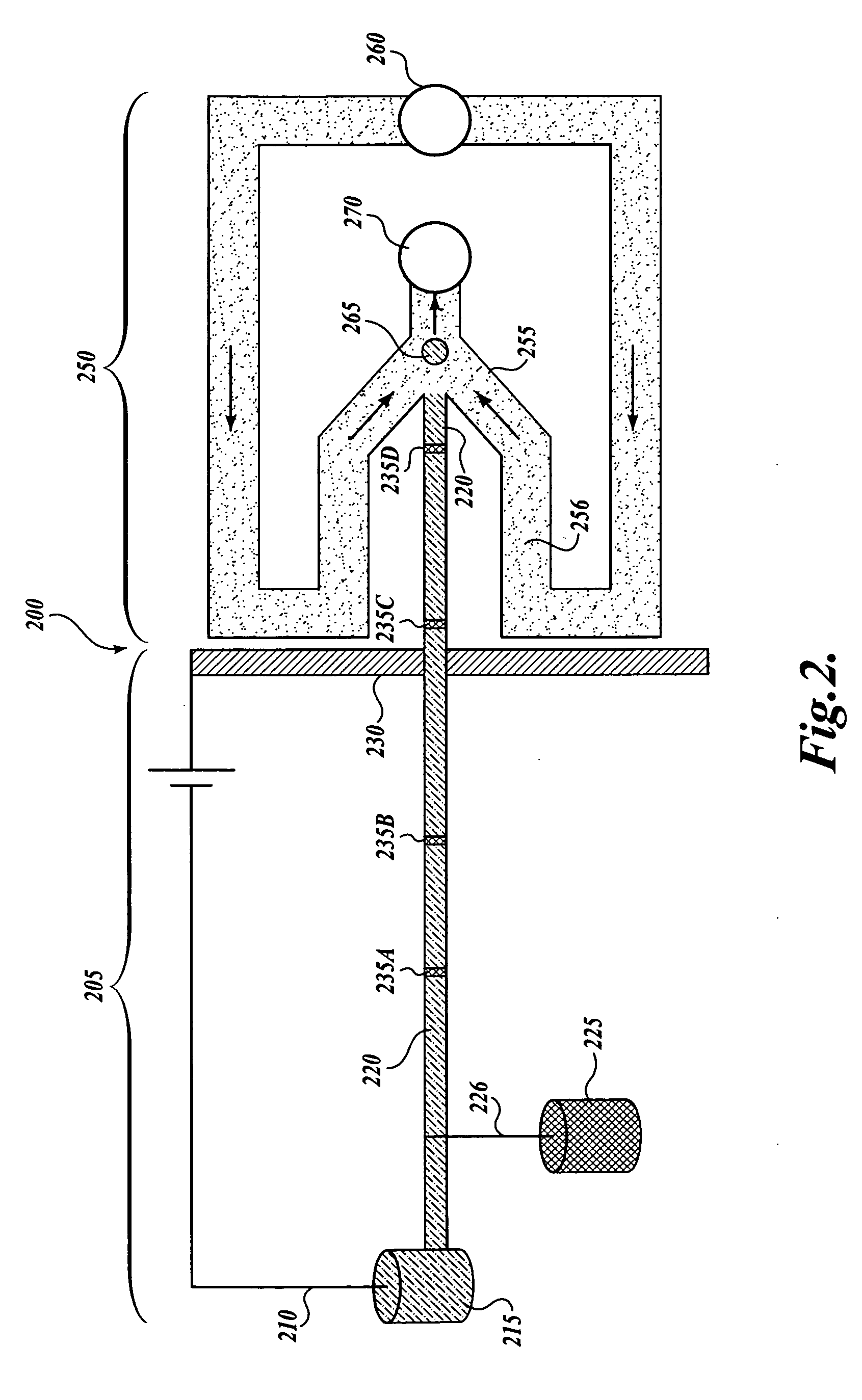Droplet compartmentalization for chemical separation and on-line sampling
a chemical separation and droplet technology, applied in the field of droplet compartmentalization for chemical separation and online sampling, can solve the problems of insufficient simpleness, inability to maintain the contents of the separated peaks, and inability to easily preserve the integrity of the separated components for additional analysis or manipulation
- Summary
- Abstract
- Description
- Claims
- Application Information
AI Technical Summary
Benefits of technology
Problems solved by technology
Method used
Image
Examples
example 1
Droplet Formation and Analysis of Liquid Separated By Capillary Electrophoresis
[0071]A fluidic-device design similar to that illustrated in FIG. 2 was used to compartmentalize CE-separated bands of analyte. The device was fabricated in polydimethylsiloxane (PDMS) and consisted of three regions: (1) a sample injection region, (2) a CE separation channel, and (3) a droplet formation region. The sample-injection channel was 3 μm by 3 μm cross-section and served as a fluidic resistor between the sample reservoir and the CE separation channel. Injection of a sample plug into the CE channel was achieved using a “screw valve” to press down on the sample-injection channel. The screw was “closed” (i.e., pressed down to block off the channel) before and after injection, thus the pressure remained balanced and the sample solution was unable to bleed into the separation channel during CE.
[0072]The CE channel cross-section was 10 μm×10 μm. The droplet formation region was comprised of two oil ch...
example 2
Droplet Immobilization
[0080]Depending on the application, droplets might be further analyzed on-chip or removed off-chip for additional separation or assay. For further on-chip analysis, optical and electrochemical techniques are typically useful for analysis, but for these techniques the droplets need to be docked and stored in a spatially defined manner after chemical separation. Droplets were generated in this experiment with a device similar to that of FIG. 2.
[0081]To facilitate docking of droplets, a device was fabricated similar to the device of FIG. 4A with tall and wide channels with alcoves (50 μm×75 μm), where droplets flowed and docked, and small constricted channels (10 μm×10 μm), that allowed for liquid flow through the alcoves but which prevented the droplets from passing through, as illustrated in FIG. 9A. In the absence of droplets, the flow path through the small constricted channel offers less flow resistance than the path down the larger channel. As a result, a dr...
PUM
| Property | Measurement | Unit |
|---|---|---|
| Size | aaaaa | aaaaa |
| Area | aaaaa | aaaaa |
| Biological properties | aaaaa | aaaaa |
Abstract
Description
Claims
Application Information
 Login to View More
Login to View More - R&D
- Intellectual Property
- Life Sciences
- Materials
- Tech Scout
- Unparalleled Data Quality
- Higher Quality Content
- 60% Fewer Hallucinations
Browse by: Latest US Patents, China's latest patents, Technical Efficacy Thesaurus, Application Domain, Technology Topic, Popular Technical Reports.
© 2025 PatSnap. All rights reserved.Legal|Privacy policy|Modern Slavery Act Transparency Statement|Sitemap|About US| Contact US: help@patsnap.com



